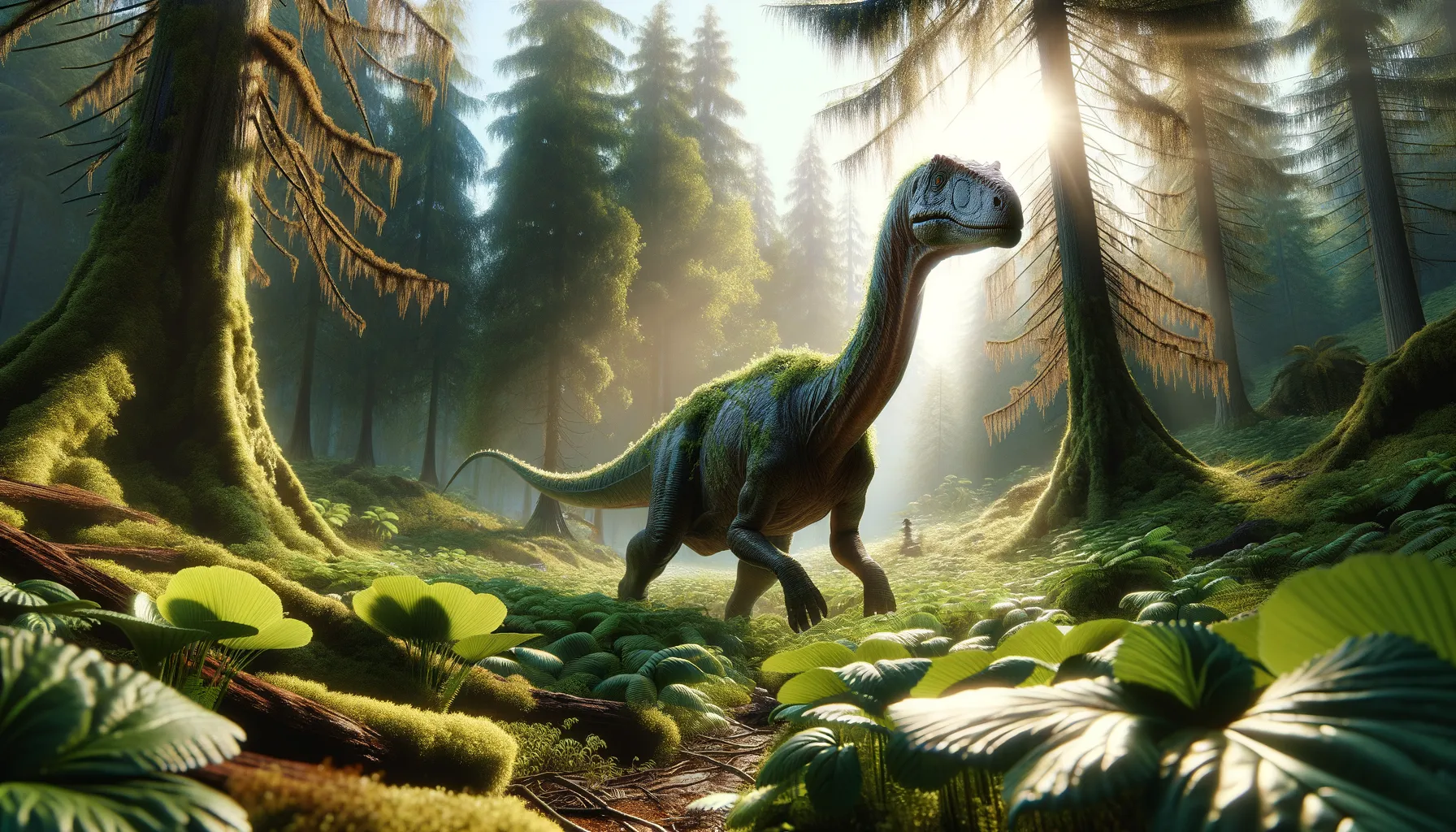
Paludititan
Titanosaur of Europe's Cretaceous islands!
Period
Cretaceous
Length
Approximately 10 meters long.
Height
About 8 feet at the shoulder.
Weight
Approximately 5 tons.
Paludititan was a long-necked, herbivorous dinosaur that roamed Europe during the late Cretaceous period. As a titanosaur, it was a massive creature, yet it was smaller than its relatives due to the island habitat known as 'island dwarfism'. Found in what is now Romania, its fossils provide crucial insights into the adaptation and evolution of dinosaurs in insular environments. It was well-adapted to a life in lush, forested areas, feeding on the abundant plant life.
Diet
Paludititan was herbivorous, feeding on a diet rich in ferns, cycads, and conifers. Its long neck allowed it to reach high vegetation, while its robust body digested tough plant matter.
Hunting
As a herbivore, Paludititan did not hunt but instead foraged for food. Its ability to travel and browse efficiently was key to its survival in an environment filled with dense vegetation.
Environmental challenges
Living on islands posed unique challenges such as limited resources and space, which likely influenced its size. It faced competition for food with other herbivores and had to adapt to fluctuations in climatic conditions. Periodic flooding or volcanic activity may have also impacted its habitat, requiring it to migrate or adapt quickly to survive.
Speed
Slow-moving due to its large size.
Lifespan
Estimated to live several decades.
First discovery
Discovered in 2010 in Romania's Hațeg Basin.
Fun Facts
- Paludititan was a dinosaur that lived around 70 million years ago during the Late Cretaceous period.
- It belonged to a group of long-necked dinosaurs known as sauropods, famous for their enormous size.
- The name 'Paludititan' means 'swamp titan,' reflecting its likely habitat in swampy areas.
- Fossils of Paludititan have been found in what is now Romania, suggesting it lived on islands in a prehistoric archipelago.
- Although large, Paludititan was smaller than some of its giant sauropod relatives, possibly due to island living where resources were limited.
- The discovery of Paludititan adds to our understanding of how dinosaur species adapted to different environments.
- This dinosaur had a very long neck and tail, which helped it reach plants and balance its massive body.
Growth and Development
Paludititan likely grew to its full size over many years, with a prolonged juvenile phase. Its growth may have been influenced by the limited resources on the islands, resulting in its smaller stature compared to mainland titanosaurs. Fossil evidence suggests that its bones developed in a way that supported growth in a resource-constrained environment.
Habitat
This dinosaur inhabited floodplains and forested regions of the late Cretaceous islands. The lush vegetation provided an ample food supply, supporting its herbivorous diet. The island setting contributed to unique evolutionary pressures, leading to differences in size and adaptation compared to relatives on larger landmasses.
Interaction with other species
Paludititan coexisted with a range of other species, including smaller herbivorous dinosaurs and carnivores. Its size provided some protection from predators, but it needed to be wary of larger theropods. It may have had symbiotic relationships with other animals, such as birds or smaller reptiles, that helped keep its skin clean from parasites.
Natural lifespan
Paludititan likely had a lifespan that extended into several decades.
Reproduction
Paludititan was an egg-layer, with females likely laying clutches of eggs in secluded areas to protect them from predators. The young were precocial and capable of moving shortly after hatching, minimizing their vulnerability. Egg fossils suggest communal nesting habits, possibly as a strategy for protecting their offspring.
Social behaviour
While specific social behaviors of Paludititan are not well-documented, it is possible that they lived in small groups or herds for protection. Such group dynamics would aid in deterring predators and protecting young dinosaurs. Their social structure could have been influenced by resource availability and environmental pressures.
Fossil locations
Paludititan fossils have primarily been found in the Hațeg Basin of Romania. This region is known for its unique assemblage of late Cretaceous island-dwelling dinosaurs. The discoveries there have provided significant insights into the adaptation and evolution of dinosaur species in isolated environments.
